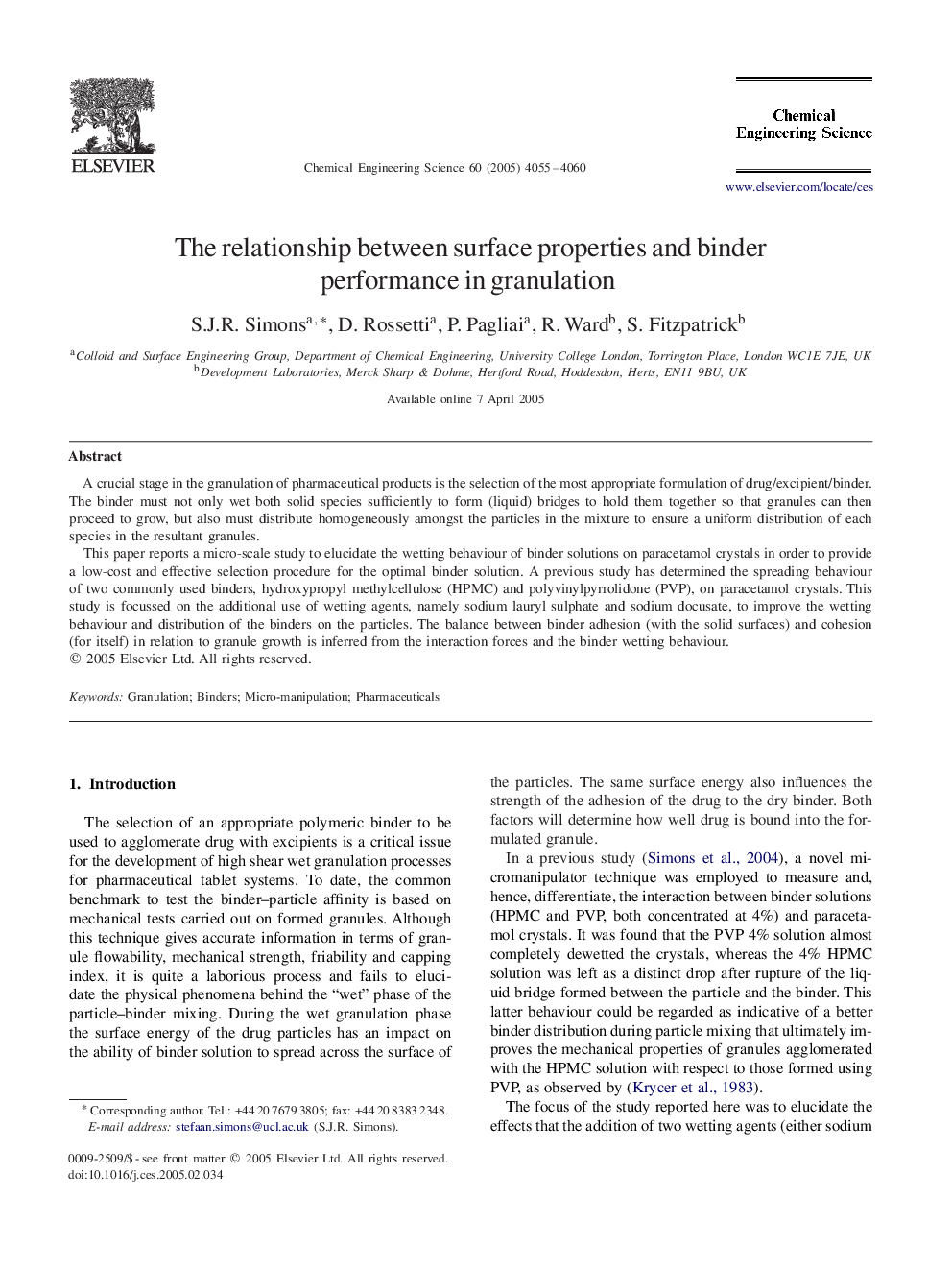| Article ID | Journal | Published Year | Pages | File Type |
|---|---|---|---|---|
| 159644 | Chemical Engineering Science | 2005 | 6 Pages |
A crucial stage in the granulation of pharmaceutical products is the selection of the most appropriate formulation of drug/excipient/binder. The binder must not only wet both solid species sufficiently to form (liquid) bridges to hold them together so that granules can then proceed to grow, but also must distribute homogeneously amongst the particles in the mixture to ensure a uniform distribution of each species in the resultant granules.This paper reports a micro-scale study to elucidate the wetting behaviour of binder solutions on paracetamol crystals in order to provide a low-cost and effective selection procedure for the optimal binder solution. A previous study has determined the spreading behaviour of two commonly used binders, hydroxypropyl methylcellulose (HPMC) and polyvinylpyrrolidone (PVP), on paracetamol crystals. This study is focussed on the additional use of wetting agents, namely sodium lauryl sulphate and sodium docusate, to improve the wetting behaviour and distribution of the binders on the particles. The balance between binder adhesion (with the solid surfaces) and cohesion (for itself) in relation to granule growth is inferred from the interaction forces and the binder wetting behaviour.
